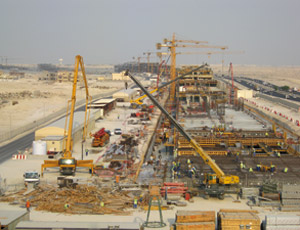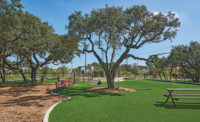One of the world’s most ambitious urban development initiatives is taking place in Doha, the capital of the Gulf kingdom of Qatar.

Even in a region known for brash city-building, Qatar’s plans will radically enlarge its urban footprint in the next decade to accommodate hundreds of thousands of additional residents with new housing, commercial and tourism centers through about a half-dozen projects.
These projects include a plan by the state-owned developer Dohaland to re-create Doha’s downtown using more traditional Gulf architecture; further, it will build a new financial district in the West Bay Lagoon in the northern part of the capital.
More than a third of Qatar’s $32.39 billion budget for 2010-2011 has been allocated to fund major projects, of which $9.75 billion is dedicated to upgrading infrastructure. The remainder will go towards funding projects such as the New Doha International Airport and New Doha Seaport.
In today’s global soft economic environment, that kind of investment means a lucrative revenue stream for construction companies such as Hochtief Construction A.G. The Essen-based German firm has contracted with Qatari officials to build two major development projects in and around Doha: the Lusail and the Barwa Commerical Avenue projects.
In May, German Chancellor Angela Merkel, along with a business delegation, personally came to Doha to witness the signing of the contract between the Emir of Qatar, Hamad bin Khalifa Al-Thani, and Hochtief. The two parties have created a joint-venture company with the state-owned developer QatariDiar.
The new JV’s main task will be developing Lusail, a new 35-square-kilometer city just north of the city of Doha. The coastal community is designed to comprise 10 districts with both residential and commercial areas, schools, medical centers and two harbors in a blue-water lagoon. The plan is for the $5.5-billion Lusail to be home to 200,000 residents when completed in 2018.
Pursuing projects in international markets, including the Gulf, has been a focus for Hochtief since a restructuring three years ago, said Henner Mahlstedt, Hochtief Construction’s chief executive officer, in a recent press release.
In 2009, the German company signed a $1.7-billion contract with QatariDiar to construct an eight-km-long Barwa commercial avenue, the largest single-order project in the company’s history. The project occupies a space roughly equivalent to an area required for 110 soccer pitches, the company says.
“The commercial avenue is a major success of last year’s systematic realignment to international growth markets,” Mahlstedt added. “Here in the Gulf region, we have plans for further expansion.”
Scheduled to be completed by June 2012, the commercial-avenue development has been named the Ain Khaled Commercial Avenue.
The project will cover an area of 800,000 square meters and will consist of residential units, commercial units, retail outlets, showrooms and restaurants.
Ain Khaled is just one part of an overall Barwa development, which also includes a new $1.36-billion financial district and a $1.36-billion housing development, which are due to open in early 2013 and early 2015, respectively.
The housing project, for example, is planned to consist of 8,000 residential units built in two phases, a hospital, a bank, a school and retail outlets.
Such infrastructure building is taking place all across the Gulf, despite a global economic recession, says Areej Sharif, head of community construction with Zawya Ltd., a Dubai-based market intelligence firm that researches businesses in the Gulf region. As the companies build up these new communities, they are also upgrading power, water and sewer systems.
“[Infrastructure] has been the biggest issue for years,” she says, adding that even with all its natural-gas wealth, Qatar must still impose rolling blackouts during the summer because of inadequate infrastructure.


Post a comment to this article
Report Abusive Comment